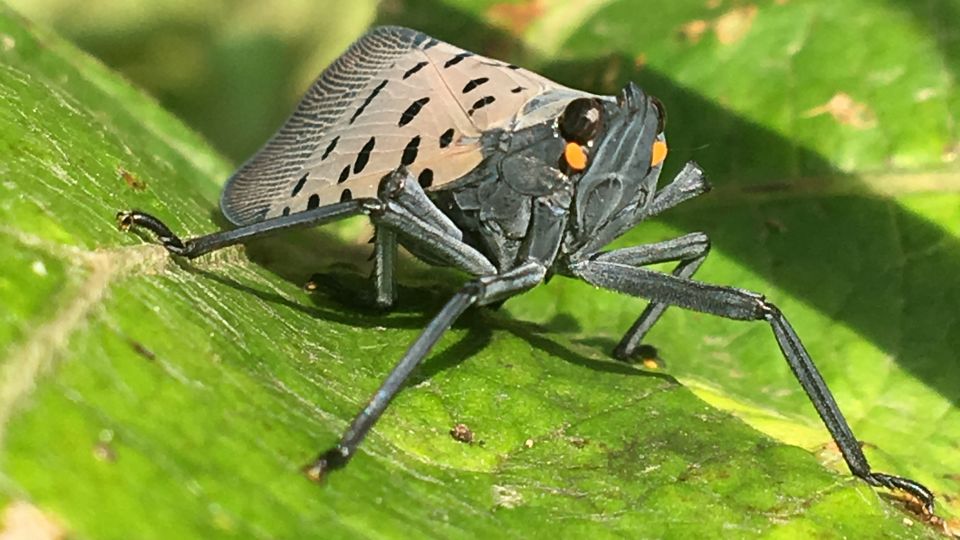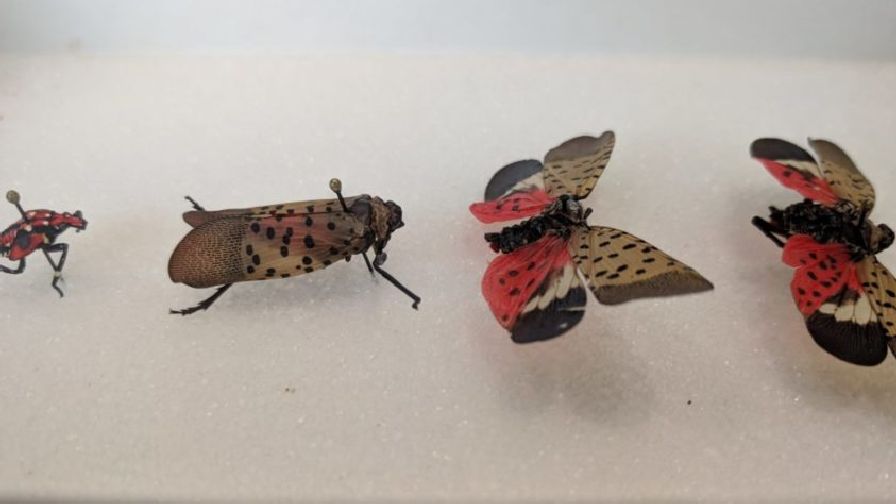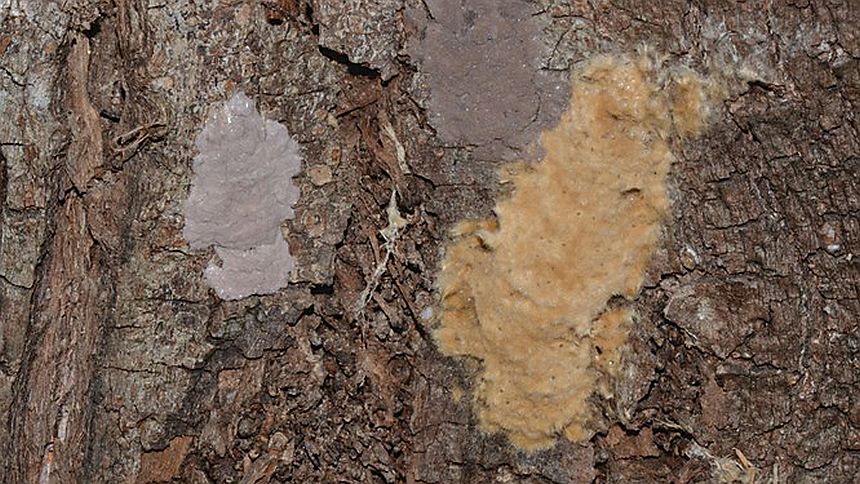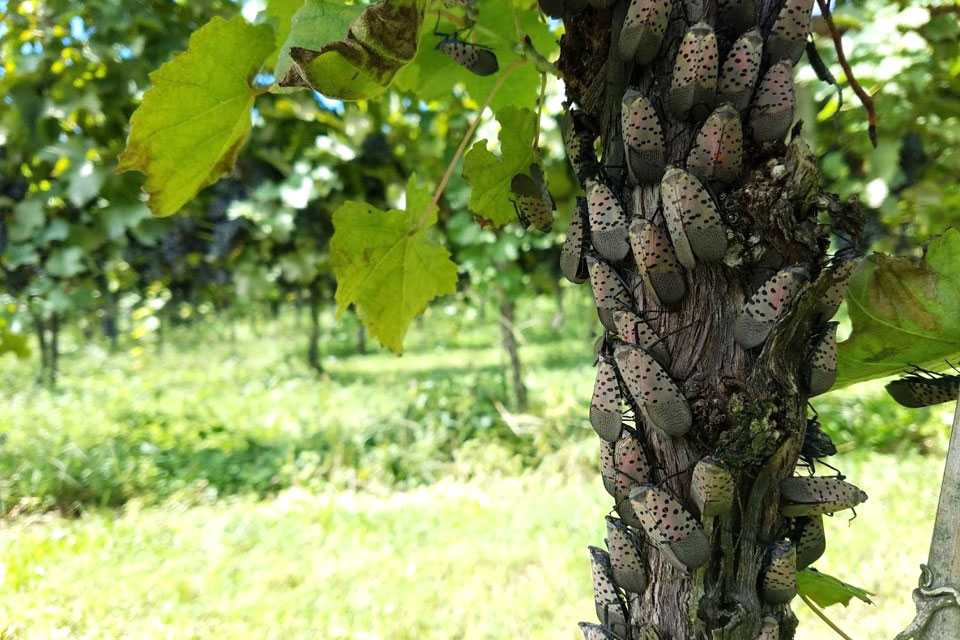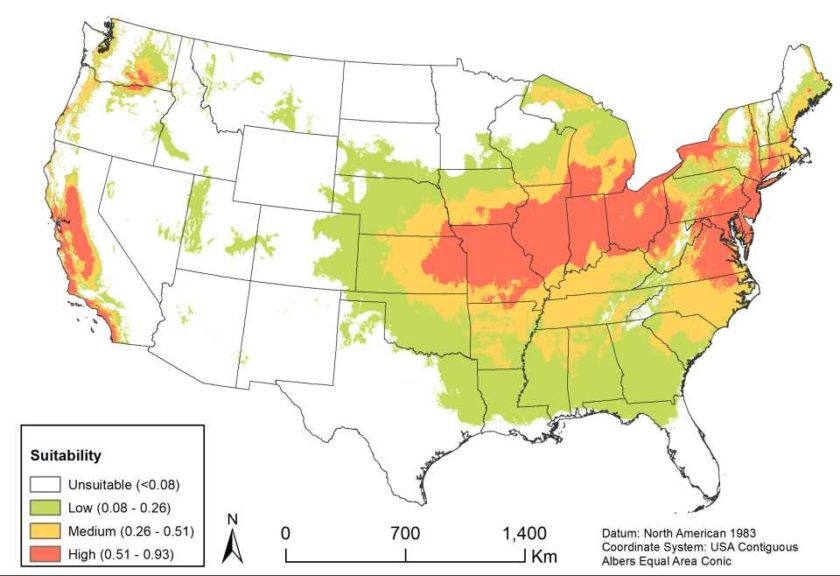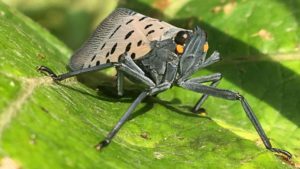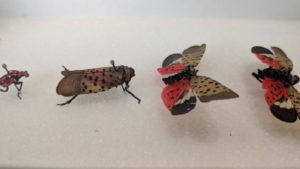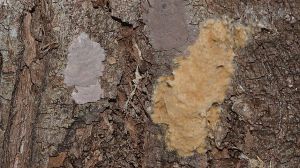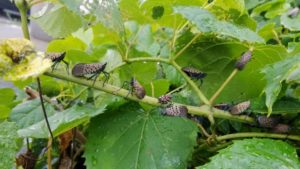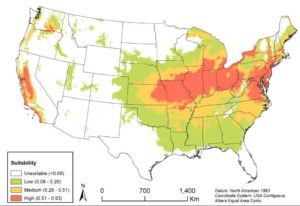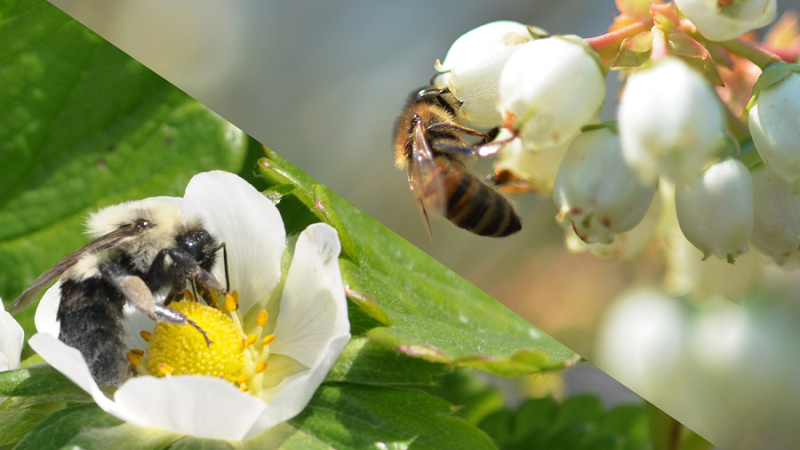Red Alert in New York State for Spotted Lanternfly
New York, New York … if the spotted lanternfly (SLF) can make it there, the fear among locals is that it can make it anywhere. Especially vulnerable are the state’s five major grape-growing regions, which these days are as closely guarded as someone in a witness protection program.
SLFs love grapes. The invasive planthopper from Asia also longs for apples, raspberries, and blueberries, but its fruit of choice is grapes. And New York has more of those than every state but California and Washington.
“Grapes — that’s what we’re really concerned about here in New York State,” Brian Eshenaur, Senior Extension Associate with the state’s Integrated Pest Management Program, says.
That anxiety heightened this summer. “Over the past three or four years, maybe every three months there’d be a new find or a new infestation, but it (was) happening this summer bi-weekly or weekly,” Eshenaur says. “Last year in New York State it was only in a couple of isolated locations, and it’s certainly spread from there.”
SLF infestations, as of Oct. 19, had been found in 11 New York counties, including all five boroughs of New York City. Individual finds of the pest (but no SLF infestations) had been discovered in another 13 counties, ranging as far east as Suffolk County on Long Island to as far west as Erie County along Lake Erie.
In between are approximately 35,000 acres of vineyards covering 900 grape farms and 470 wineries. The state’s most significant grape-growing regions, accounting for wine and juice, are Long Island, Hudson River, Finger Lakes, Lake Erie, and Niagara Escarpment.
“It’s estimated that there is a $6.6 billion direct economic impact of grapes and wineries in New York State,” Eshenaur says. “So we really want to be on top of spotted lanternfly potentially impacting that important sector of our economy.”
PRIORITIZED LOCATIONS
The New York State Department of Agriculture and Markets has been monitoring SLF in three counties this year: Broome, Tompkins, and Suffolk. By intent, each is adjacent to a grape-growing region, according to Invasive Species Coordinator Thomas Allgaier.
In Broome County, near the Pennsylvania border, a USDA experimental trap set in the city of Conklin has netted several hundred adult SLF. Area landmarks include the Interstate 81 corridor, the Susquehanna River, and a rail yard.
“These are ideal places for SLF to be introduced, whether it’s vehicles passing through from Pennsylvania to New York or cargo passing through from Pennsylvania to New York,” Allgaier says. “It’s a prime location for (SLF) hitchhikers to hop off and invade. The concern is that this is very close to the grape-producing area in the Finger Lakes. It’s one of our higher priorities.”
One hundred ninety-three SLF traps have been set in the Finger Lakes Region, primarily in transportation corridors such as Binghamton, Syracuse, and Rochester. The only positive finding thus far in 2021 occurred atop a parking garage in Ithaca in Tompkins County.
“We’ve done quite a bit of work with (Ithaca) City Forester Jeanne Grace and her crew. They’ve been a tremendous help,” Allgaier says, noting that a hired contractor was expected to apply treatments in the area before the end of the season.
In Bohemia, Suffolk County, near MacArthur Airport on Long Island, positive trappings in 2021 have been a surprise.
“We did not expect to find it that far east this year,” Allgaier says, noting that SLF potentially fly only about four to six miles on their own per year. At the same time, human-assisted movement, he adds, is “kind of unlimited.”
“We were unhappy to find it in this industrial area near the airport. It’s a mixed-use area, with industrial and residential, and of course the airport is there. There’s a rail line that runs through there. The Sunrise Highway, which is a four-lane highway, runs through there. The transportation access and then also the industrial component, with warehouses and materials moving in and out, is likely how it was introduced. Right now, we’re just trying to assess it.
“Where in Conklin we’re finding hundreds of adults, in Bohemia we’re finding 10 or 12,” Allgaier says. “Initially it was one here, one there. We couldn’t find any concentration of them. We had an outreach campaign in that area and one of the local employees of a small factory reported SLF. We went and looked and, sure enough, we found quite a few, meaning 10 or 12.”





